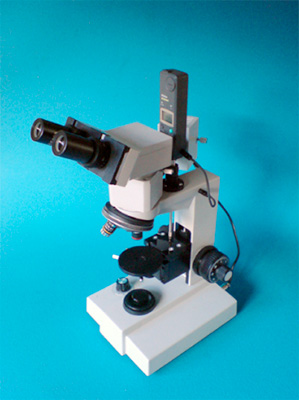The Nexgen Optical Radiuscope is manufactured in the UK and available in a number of versions to suit individual requirements.
The operation of measuring the radius of curvature is achieved by using the Drysdale principle. Light from the target is reflected down the microscope to form an image on the surface of the lens (surface image). The display is zeroed and the stage is moved to find the Top Image (aerial image). The distance moved is the radius of the lens, IE 7.50mm = 45 dioptres.
Its main attributes are its ease of use, 45mm focusing travel, built in power supply, and special target resulting in superior optical performance.
Can be supplied in Monocular or Binocular, fitted with either analogue or digital gauges.

A radiuscope is an optical instrument used to measure the radius of curvature of the anterior and posterior surfaces of rigid contact lenses. It works on the Drysdale Principle.
Nexgen Optical can offer new radiuscopes, in monocular or binocular, analogue or digital format, depending on your requirements.
When using a radiuscope, make sure the lens is clean and dry, so it will provide clear images. Fill the lens mount with saline. You’ll find the real image on the lower end of the scale and the aerial image at approximately 6mm to 9mm on the scale. Both images appear as spokes or stars. After locating and centering the aerial image, lower the instrument to the real image. When the real image is in clear focus, zero the radiuscope and then return to the aerial image. At the point where the aerial image is in clear focus, read the BCR from the scale.
It is generally advisable to double check the final reading. This can be accomplished by focusing the microscope all the way up to the original aerial image. At this point the pointer should once again be on zero. If not, reset it at zero and repeat the entire process.
Toric curves are somewhat more complex to interpret than spherical curves, although the technique employed is the same. Since a toric surface contains two separate radii of curvature not all the spokes in the pattern will be in focus simultaneously. Taking an accurate reading, therefore is a matter of making two separate measurements for each lens surface.
While spherical lenses contain only one power, those containing cylinder require the reading of two powers.
When a toric contact lens is rotated in a clockwise motion, different spokes
on the target will come into focus as illustrated in the figures above.